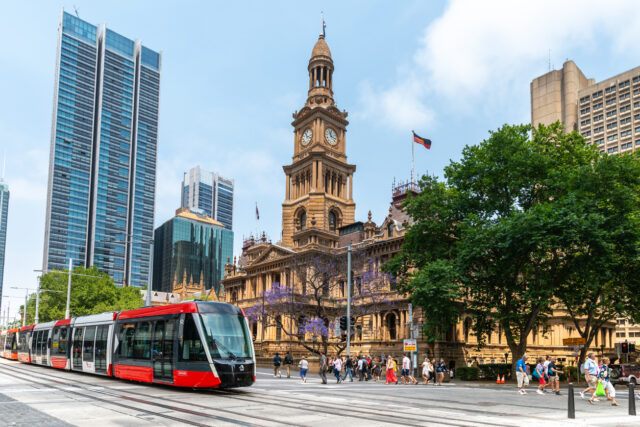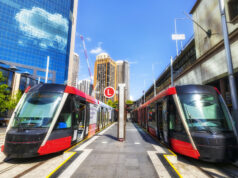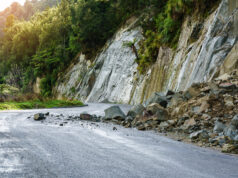
We asked two eminent municipal engineers how the year ahead is likely to unfold.
It’s been 12 months since COVID-19 first disrupted the developed world, and now, many nations are shifting their attention from crisis management to economic recovery. Amongst public works engineers, there’s a feeling of cautious optimism, principally because governments are promising to invest in public infrastructure as a means of kick-starting their ailing economies. But some experts are concerned that the money may not go where it is most needed.
John Thomson, the UK-based president of the International Federation of Municipal Engineers (IFME), says federal governments tend to favour investment in new infrastructure, rather than spending stimulus money on the maintenance of existing assets. “It suits politicians not to pay too much attention to ageing infrastructure, because new projects generate headlines and better political outcomes,” he says.
“However, what’s really needed in 2021, rather than investment in new builds, is maintenance of public assets as they stand.”

He points to the ailing UK road network as an example. “There are some very, very deep-seated structural failures of highways here in Britain. The Roads Condition Survey has, for a number of years now, shown billions of pounds worth of backlog. UK-wide, there’s a calculated £13-billion of work required for us just to get back to steady state.”
But instead of allocating adequate funds to maintenance, the UK government is pouring money into new-build projects such as the high-speed rail connection known as HS2. Says Thomson: “That project is demanding huge amounts of money, and for a limited benefit, but the politicians are really keen to push ahead with it for political reasons.”
Thomson says factors including population growth, reduced government spending and increasingly wild weather have contributed to a deterioration of public assets in countries across the Northern Hemisphere in recent years. “It’s vital for those people who have government’s ear to push for investment in maintenance this year, otherwise the problems countries are facing will just compound,” he says.
According to Chris Champion, IFME’s Sydney-based secretary general, Australia’s municipal engineers have been contending with similar medium-term challenges. “The perfect storm of a steadily reducing funding base, low affordability, ageing infrastructure and areas of both growing and declining population is creating huge challenges for infrastructure managers,” he says.
Champion believes Australian governments should allocate their coronavirus stimulus spending to existing infrastructure, prioritising projects that have societal as well as economic benefits – for example, making poorly maintained roads safer.
“More than ever, we need to invest every dollar efficiently and effectively for the long term,” he notes. “The impact of the pandemic on our economies means that we can’t afford to waste any infrastructure investment. It needs to be spent in such a way that, in parallel, it achieves multiple objectives. Funding initiatives must offer more than just short-term stimulus.”
Champion also believes climate change will re-emerge as a key consideration for policy makers – and, by extension, municipal engineers – in 2021. He points to a March 2020 issues paper produced by ISCA, Climate Works and ASBEC that shows 70% of Australia’s emissions are associated with infrastructure projects.

“Emissions reductions should be prioritised in decision making as part of our infrastructure-led recovery,” he says. “Infrastructure can play a crucial role in supporting Australia’s transition to net zero emissions.”
In addition, Champion says public works engineers should be devoting time and resources to ‘future proofing’ their assets against those effects of climate change that are now unavoidable, such as increased bushfires and flooding.
“For asset managers, IPWEA’s International Infrastructure Management Manual (IIMM) suggests three key principles that should be considered when planning for climate change impacts across all infrastructure types,” he says. Those principles are:
- Factor climate risk into decisions and planning
- Use long term, adaptive thinking to allow for future uncertainty
- Prioritise actions with multiple benefits or ‘low-regrets’.
While economic factors and climate change are likely to present significant challenges for asset managers this year, Thompson says 2021 could also usher in a number of technological advances that will make the management of public infrastructure assets more efficient.
He singles out ‘digital twin’ technology, which creates digital replicas of assets such as highways and then repeats the process at a later date. “The system will pick up any changes to what it saw the previous time,” he explains. “And it’s looking for highway assets specifically – it’s not looking for cars or members of the public walking about the street. For example, if a road sign had been knocked over because of an accident, it understands that the road sign is missing.”
Digital twin technology is already being utilised in Finland, Thomson says. And it may soon be drone-operated, further increasing efficiency.
In conclusion, Thomson says IFME’s members around the world have varying opinions about how public infrastructure will fare in 2021. “But the members I’ve spoken to are all certain of one thing,” he says: “that the fallout from the coronavirus is going to alter societies permanently, particularly in areas such remote working vs. office working. That will have a major effect on all types of public infrastructure assets.”













